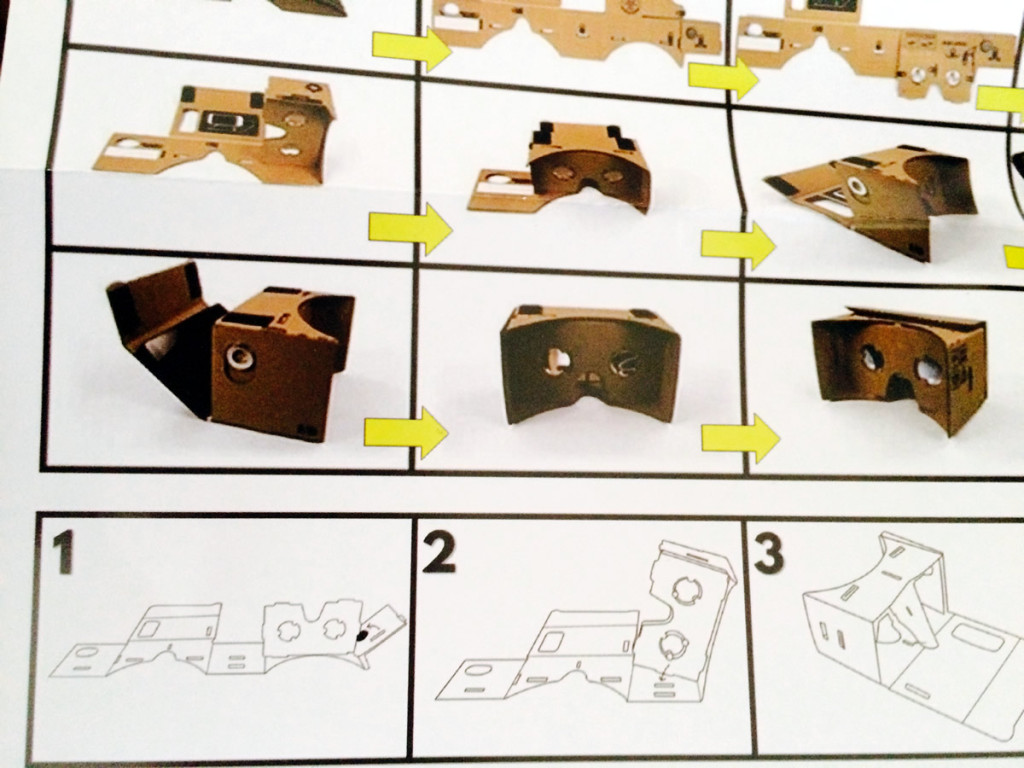 Here at WatzThis?, we recently starting looking at Google Cardboard. If you’re not familiar with what Cardboard is, it’s an inexpensive way to experience virtual reality using your Android or iOS phone and a viewer that can be built from cardboard and a few other parts that can be bought at a hardware store.
Here at WatzThis?, we recently starting looking at Google Cardboard. If you’re not familiar with what Cardboard is, it’s an inexpensive way to experience virtual reality using your Android or iOS phone and a viewer that can be built from cardboard and a few other parts that can be bought at a hardware store.
If you don’t want to go through the trouble of buying all the parts needed to build a Cardboard viewer, you can buy a kit that contains all the parts and you can assemble it yourself.
The instructions that came with the kit we bought were a series of cryptic and poorly-printed photographs that supposedly showed the series of steps for putting the device together correctly. Eva light-heartedly referred to them as “boy directions”, meaning that they were messy, minimal, imprecise, hard to follow, and mostly an unimportant afterthought to what the engineers of the kit considered to be the real product.
But, the real product is worthless if no one can assemble it. Black and white photos with a couple arrows don’t work for many people. They may be obvious to the engineers of the product, but the rest of us struggle to figure them out.
The phenomenon of “boy directions” extends beyond furniture and DIY virtual reality kit assembly instructions. Perhaps the worst offender is Apple. No matter how clever the user interface designers think they are, most people we know don’t appreciate having to buy a separate “missing manual” book that tells them how to use the product they just spent a considerable amount of money on and that only comes with pages of poorly constructed picture instructions.
In ancient times, people drew pictures to communicate ideas. As their ideas got more complex, symbols and written languages were developed. It turned out that words and sentences were very effective ways to communicate information and teach new skills. The written word eventually replaced cave drawings, and it’s been proven time and time again to be the best way for people to communicate and learn.
The trend towards picture instructions for teaching technical tasks seems to be nothing more than an assumption that “people hate reading”. We don’t believe that’s true. People don’t want to read bad writing; and people don’t like bad pictorial instructions even more.
